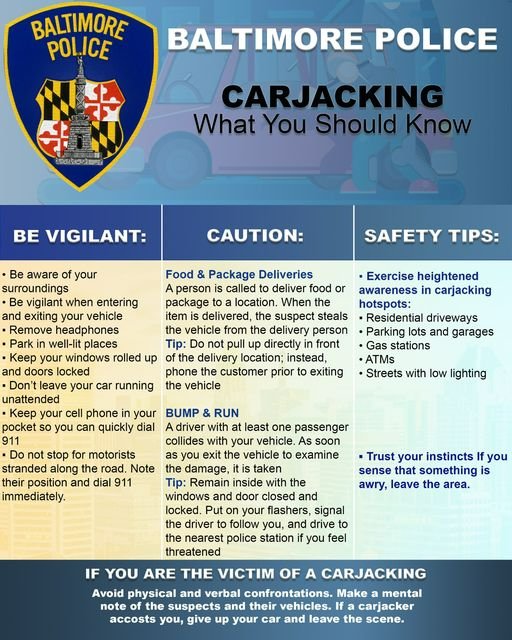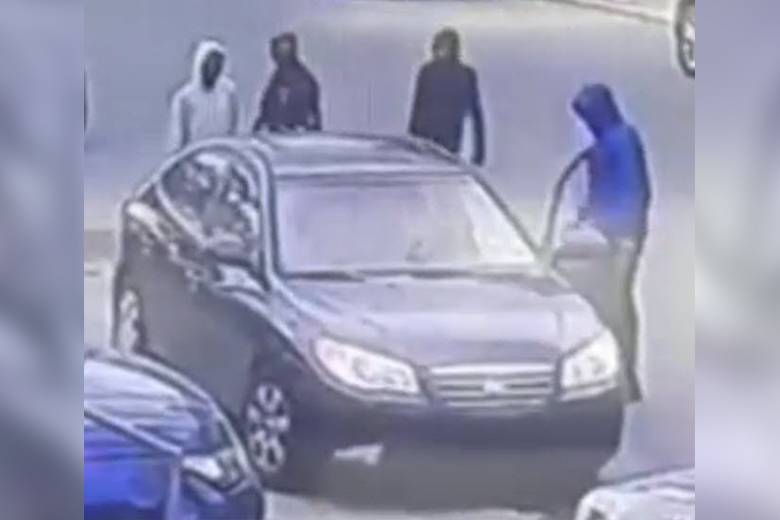BALTIMORE, MD – Carjacking in the city of Baltimore is on the rise and terrorizes the population. Carjackers have been targeting people from all races, genders, and financial situations. It is a crime that has affected thousands in the city in the past few years.
To make coping with the threat of carjacking and how to conduct yourself during a future carjacking, the new help and fact sheet aims to alert residents of carjacking ‘best practices’.
The City of Baltimore and the Baltimore Police Department have released crucial information and safety tips for residents and visitors in response to an increase in carjacking incidents.
Officials urge the public to maintain vigilance and awareness of their surroundings to mitigate the risk of carjackings. Recommendations include being cautious when entering and exiting vehicles, removing headphones, parking in well-lit areas, keeping windows rolled up and doors locked, not leaving cars running unattended, and keeping cell phones handy to dial 911 if needed. Additionally, individuals are advised against stopping for stranded motorists, instead suggesting they call 911 to report the situation.

Carjackings often occur under common scenarios, such as during food and package deliveries. Deliverers are advised to not pull up directly in front of the delivery location and to contact the customer before exiting the vehicle. Another prevalent method is the “bump and run,” where attackers collide with a vehicle and steal it when the driver exits to assess the damage. In such cases, drivers are recommended to stay inside their vehicle, lock the doors, use flashers, and drive to the nearest police station if they feel threatened.
The police department highlights specific locations where carjackings are more frequent, including residential driveways, parking lots, garages, gas stations, ATMs, and poorly lit streets. The overarching message is for individuals to trust their instincts; if something feels amiss, they are encouraged to leave the area immediately.

